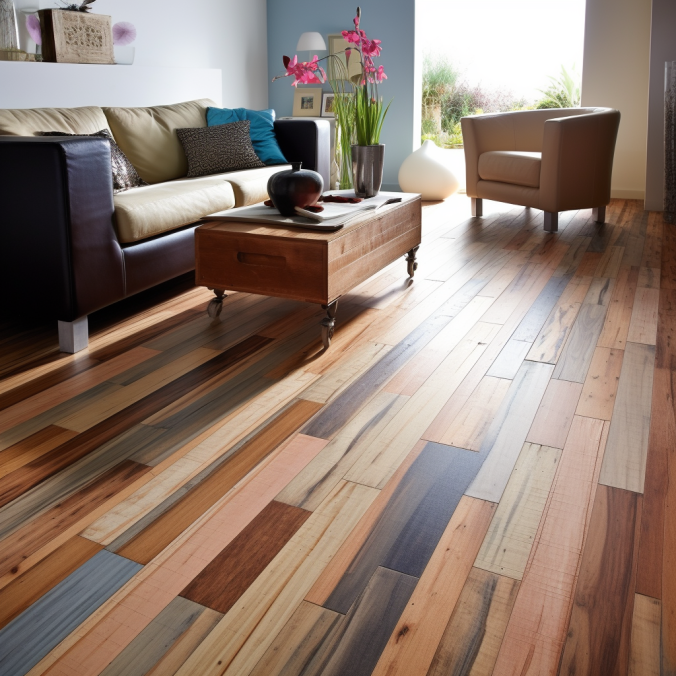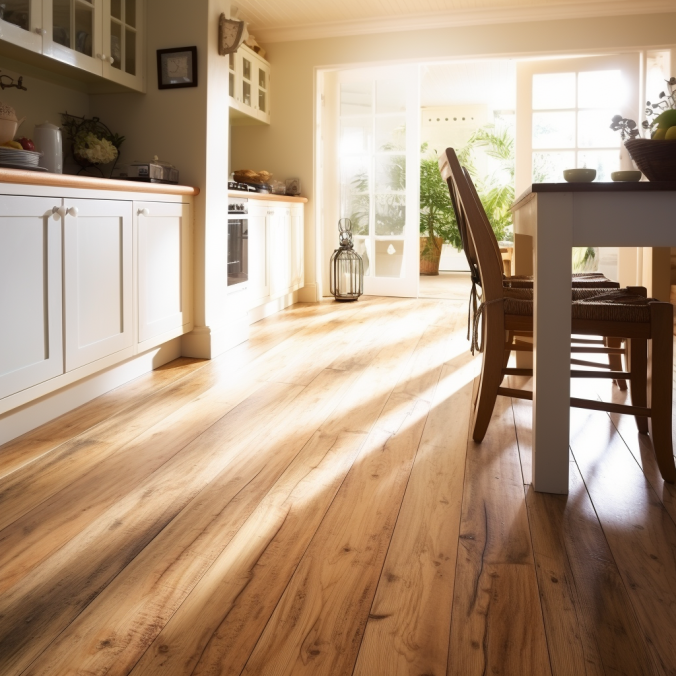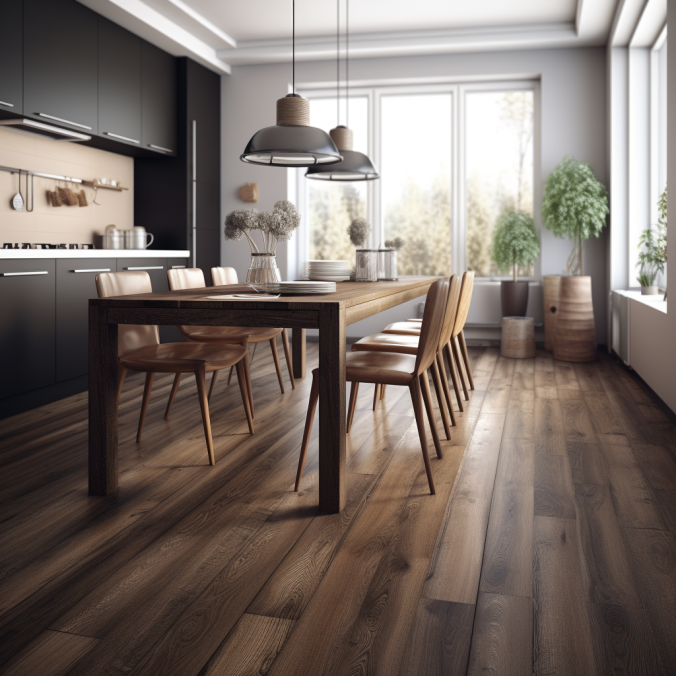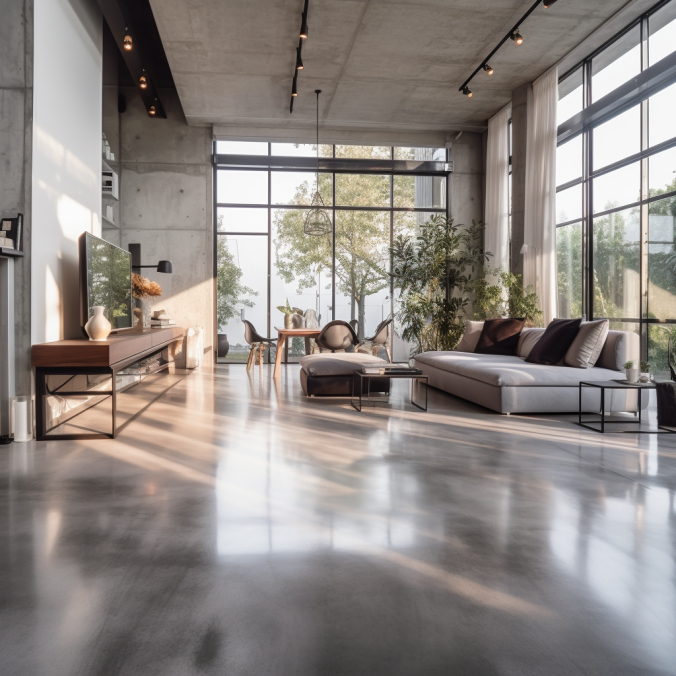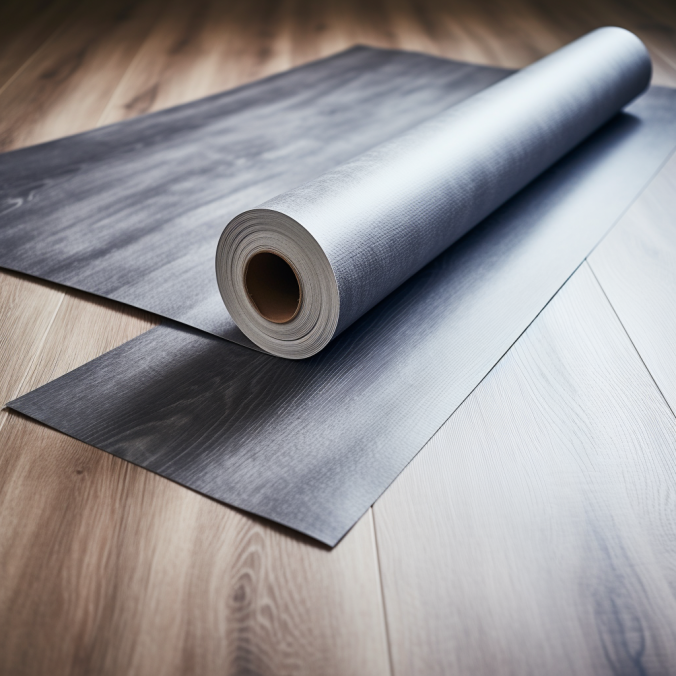
Cheap flooring options
Unlocking Affordable Elegance: Your Guide to Budget-Friendly Kitchen Flooring Options
Overview of cheap flooring options
When it comes to flooring options on a budget, there are plenty of affordable and inexpensive choices that can still give your space a stylish and durable finish. From laminate and vinyl to ceramic tile and concrete, there is a wide range of materials to choose from, each offering its own unique advantages. Whether you have a high-traffic area, are looking for a cost-effective DIY solution, or want a flooring option that is both budget-friendly and environmentally friendly, there is something for everyone. In this article, we will explore the variety of cheap flooring options available, highlighting their benefits, aesthetics, and suitability for different spaces. Whether you are remodeling your home, designing a commercial space, or simply looking to update a room, these affordable flooring choices are sure to meet your needs without breaking the bank. So let's dive in and explore the world of cheap flooring options!
Types of flooring materials
There are several types of flooring materials that can be used as cheap flooring options. Laminate flooring is a popular choice for those on a tight budget. It is an affordable option that imitates the look of hardwood floors at a fraction of the cost. Laminate flooring is also more durable and easier to maintain compared to traditional hardwood floors.
Concrete floors are another inexpensive flooring option. They are ideal for high-traffic areas as they are incredibly durable and resistant to wear and tear. Concrete floors can be polished or stained in various colors and designs to create a modern and stylish look.
Linoleum floors are also a cost-effective flooring solution. Made from natural and renewable materials such as cork and linseed oil, linoleum is an eco-friendly choice. It is available in a wide range of colors and patterns, making it a versatile option for any room.
Overall, laminate flooring, concrete floors, and linoleum floors are all affordable flooring materials that offer different characteristics and features to suit various budgets and design preferences.
Laminate Flooring
Laminate flooring is a popular and affordable option for homeowners looking to revamp their floors on a tight budget. This type of flooring offers the look of hardwood floors at a fraction of the cost. It is made up of different layers, including a durable top layer, a decorative layer that mimics the appearance of various wood grains, and a core layer for stability. Laminate flooring is available in a wide range of colors, patterns, and designs, allowing homeowners to find the perfect style to complement their decor. It is also easy to install, making it a great DIY project for those looking to save even more money. With its durability, affordability, and versatility, laminate flooring is an excellent choice for anyone seeking a cost-effective flooring option.
Advantages and Disadvantages
of different cheap flooring options such as laminate flooring, concrete floors, and linoleum floors.
Laminate flooring is a popular choice for budget-friendly flooring projects. It offers the look of hardwood floors at a fraction of the cost. Laminate is durable, resistant to scratches and fading, making it suitable for high-traffic areas. It is also easy to clean and maintain. However, laminate flooring can be prone to water damage, so it may not be the best option for bathrooms or areas prone to moisture.
Concrete floors are another affordable option for flooring. They are durable and can withstand heavy foot traffic. Concrete floors can be stained or polished to create unique and modern designs. They are also low-maintenance and resistant to stains and spills. However, concrete floors can be hard and cold underfoot, making them less comfortable compared to other options. They can also be difficult to install and may require professional help.
Linoleum floors are an environmentally-friendly and cost-effective option. Made from natural materials such as linseed oil and cork, linoleum is durable and long-lasting. It is available in a wide variety of colors and patterns, offering versatility in design. Linoleum is also resistant to stains and easy to clean. However, linoleum floors may require regular maintenance such as waxing to maintain their appearance and can be prone to scratches and dents.
In conclusion, laminate flooring, concrete floors, and linoleum floors are all affordable flooring options with their own set of advantages and disadvantages. Consider factors such as durability, cost, and suitability for high-traffic areas when choosing the best option for your flooring project.
Cost
When considering the cost of flooring materials, several factors come into play. The average cost per square foot is a key consideration. Laminate flooring typically ranges from $1 to $7 per square foot, while concrete floors can cost $2 to $10 per square foot. Linoleum floors generally fall in the range of $2 to $5 per square foot.
In addition to the material cost, installation expenses are an important consideration. Laminate flooring installation can range from $2 to $8 per square foot, depending on the complexity of the project. Concrete floors may require professional installation, which can cost $5 to $12 per square foot. Linoleum installation tends to be more affordable, ranging from $3 to $8 per square foot.
Underlayment is often necessary, especially for laminate and linoleum floors. This can add an additional cost of around $0.50 to $3 per square foot. Maintenance costs should also be taken into consideration. Laminate and linoleum floors generally require minimal upkeep, while concrete floors may need occasional sealing or polishing, which can add to maintenance expenses.
It's important to note that the quality of the material and the complexity of the installation can affect the overall cost. Higher-quality laminate or linoleum flooring may come at a higher price, while intricate concrete floor designs or subfloor preparation can increase installation costs. Considering these factors will help determine the most cost-effective flooring option for your project.
Installation Process
Installing laminate flooring involves several steps. First, prepare the subfloor by ensuring it is clean, dry, and level. Next, lay down a moisture barrier or underlayment to protect the laminate from moisture and create a smooth surface. Then, start laying the laminate planks, interlocking them tightly and leaving a small gap around the edges for expansion. Use a hammer and tapping block to click the planks together. Finally, install baseboards or molding to cover the gaps and complete the installation.
For concrete floors, preparation is crucial. Clean and repair any cracks or imperfections. Apply a concrete primer to ensure proper adhesion. Then, apply an adhesive or mortar to the floor. Lay down the tiles or laminate flooring and press firmly to ensure they stick properly. Allow the adhesive or mortar to dry before walking on the floor. Finish the installation by applying a sealant or polish to protect the concrete.
Installing linoleum floors involves similar steps. Prepare the subfloor, ensuring it is clean, dry, and level. Roll out the linoleum sheet and cut it to fit the room, leaving a small gap around the edges. Apply adhesive to the subfloor and lay the linoleum, smoothing out any wrinkles or air bubbles. Use a floor roller to press the linoleum firmly to the adhesive. Trim the edges and apply baseboards or molding to complete the installation.
Considerations for installation include having the necessary tools such as a saw, hammer, tapping block, adhesive trowel, and utility knife. It is essential to follow manufacturer instructions and guidelines throughout the installation process.
Types of Laminate Flooring
When it comes to laminate flooring, there are different types available in the market, each with its own unique features and benefits. Here is an overview of the most popular types:
1. Traditional Laminate: Traditional laminate flooring is a cost-effective option and is known for its durability. It consists of a high-density fiberboard (HDF) core with a photographic layer that mimics the look of hardwood or stone. It comes in a wide variety of colors and finishes, allowing you to achieve the desired aesthetic for your space.
2. Waterproof Laminate: If you're looking for a flooring option that can withstand moisture-prone areas like bathrooms, kitchens, or basements, waterproof laminate is an ideal choice. It incorporates a special water-resistant coating or core material that prevents water damage, making it highly durable and suitable for high-traffic areas.
3. Luxury Vinyl Plank (LVP): Luxury vinyl plank, also known as LVP, offers the look and feel of hardwood flooring with the added benefits of durability and water resistance. It features a multi-layer construction with a realistic wood grain design on the surface. LVP is highly resilient, making it a versatile option for any room in your home.
Some popular brands that offer these types of laminate flooring options include Pergo, Shaw, and Mohawk. It's important to note that the installation process may vary depending on the type of laminate flooring chosen. Always follow the manufacturer's instructions for proper installation to ensure a long-lasting and beautiful result.
In conclusion, laminate flooring comes in various types, from traditional laminate to waterproof options like luxury vinyl plank. Consider the specific needs of your space to choose the best type for your flooring project. With their durability, wide range of colors, and easy maintenance, laminate flooring options are an affordable and stylish choice for any home.
Popular Brands
When it comes to popular brands of cheap flooring options, there are several well-known names to consider. These brands offer a range of affordable flooring choices, including laminate flooring, concrete floors, and linoleum floors.
One of the most recognized brands in the laminate flooring industry is Pergo. Pergo offers a wide variety of laminate flooring options that mimic the appearance of hardwood or stone at a fraction of the cost. Their flooring is known for its durability and easy installation.
Armstrong is another popular brand that offers a diverse range of affordable flooring options. They are known for their quality laminate flooring, which is not only cost-effective but also highly durable and easy to maintain.
Shaw Floors is a trusted brand that offers affordable laminate flooring solutions. They have a wide selection of styles, colors, and textures to choose from, making it easy to find the perfect flooring for any space.
Mohawk is a well-known brand that offers laminate flooring, as well as other flooring options. They offer a variety of styles, from traditional to modern, and are known for their high-quality and durable products.
Mannington is a popular brand that offers a range of affordable flooring options, including laminate flooring. They are known for their innovative designs and commitment to sustainability.
When considering cheap flooring options, these brands, including Pergo, Armstrong, Shaw Floors, Mohawk, and Mannington, are reliable choices that offer quality and affordability.
Concrete Floors
Concrete floors are a versatile and cost-effective option for both residential and commercial spaces. They have become increasingly popular due to their durability, low maintenance, and modern aesthetic. Concrete floors can be polished, stained, or stamped to create a wide range of designs and colors, making them a versatile choice for any style of decor. In addition to their visual appeal, concrete floors are incredibly resilient and can withstand high foot traffic, making them an ideal choice for high-traffic areas. Whether you are looking to renovate a home or redesign a commercial space, concrete floors offer a budget-friendly and durable flooring option that will stand the test of time.
Advantages and Disadvantages
Laminate flooring is a popular choice for those on a tight budget. It offers a wide range of colors and modern designs, making it versatile for any decor. Additionally, laminate flooring is relatively easy to install, making it a cost-effective DIY flooring option. However, laminate floors are not as durable as other flooring materials and can be easily damaged by moisture or high-traffic areas.
Concrete floors, on the other hand, are highly durable and can withstand heavy foot traffic, making them suitable for high-traffic areas. They are also incredibly low-maintenance and can be stained or painted to achieve a desired look. However, concrete floors can be cold and hard, lacking the warmth and comfort of other flooring materials. They also require professional installation and can be expensive to install.
Linoleum floors are an affordable option and come in a wide variety of colors and patterns. They are durable and offer good resistance to scratches and stains. Linoleum floors are also eco-friendly, as they are made from natural and renewable materials. However, linoleum can be easily damaged by water and can fade over time. It can also be difficult to install, requiring professional help.
In summary, laminate flooring is a cost-effective option but lacks durability. Concrete floors are highly durable but can be cold and expensive to install. Linoleum floors are affordable and eco-friendly, but can be easily damaged by water and require professional installation. When choosing a flooring option, it is important to consider your specific needs, budget, and the level of traffic in the area.
Cost
When considering cheap flooring options, it's important to factor in the associated costs. The average price per square foot for materials can vary depending on the flooring type. Laminate flooring, for example, is one of the most inexpensive options, with prices averaging around $1 to $4 per square foot. Vinyl flooring is also budget-friendly, ranging from $1 to $5 per square foot.
However, it's essential to consider installation costs as well. On average, installation costs for laminate and vinyl flooring can range from $2 to $8 per square foot, depending on the complexity of the installation process. Additional costs may include underlayment, adhesive, and labor fees.
The cost of cheap flooring options can also vary based on the quality of materials. Higher-quality laminate or vinyl flooring may come with a slightly higher price tag compared to lower-quality options. Additionally, location can affect the cost, as labor rates may vary in different areas.
Figuring out the overall cost of your flooring project requires considering both material and installation expenses. It's advisable to consult with a flooring showroom or store to get accurate estimates based on your specific requirements.
Installation Process
The installation process for laminate flooring is relatively straightforward and can often be done as a DIY project. It typically involves measuring and cutting the laminate planks to fit the space, laying down an underlayment for moisture protection and sound absorption, and then clicking the planks together using a tongue-and-groove system. Some tools that may be needed include a saw, measuring tape, and a tapping block.
Concrete floors can be a bit more challenging to install, especially if you are starting from scratch. The process typically involves preparing the subfloor by removing any existing flooring, cleaning the surface, and leveling any uneven areas. A moisture barrier and underlayment may also be required. The concrete is then poured and allowed to cure before applying a sealer or finishing treatment.
Linoleum floors are another budget-friendly option that can be installed with relative ease. The process includes measuring and cutting the linoleum sheets to fit the space, applying adhesive to the subfloor, and laying down the sheets. Rollers are often used to ensure proper adhesion and to remove any air bubbles.
For more challenging installations, such as ceramic tile or nail-down hardwood, it is often best to hire a professional. These types of installations may require specific tools and techniques, and improper installation can lead to costly mistakes. Professionals have the expertise to ensure a proper and durable installation, especially in high-traffic areas.
In conclusion, the installation process for cheap flooring options like laminate, concrete, and linoleum floors can vary in complexity. While some can be done as DIY projects, others may require professional assistance for a flawless and long-lasting result.
Benefits for High-Traffic Areas
Using cheap flooring options for high-traffic areas can offer numerous benefits. Vinyl plank and laminate flooring, in particular, are popular choices due to their durability and longevity.
Vinyl plank flooring is known for its resilience and ability to withstand heavy foot traffic. It is constructed with multiple layers, including a strong wear layer that protects against scratches and stains. This makes it an ideal choice for areas with a lot of daily activity. Additionally, vinyl plank flooring is easy to clean and maintain, requiring only regular sweeping and occasional damp mopping.
Laminate flooring is also highly durable and able to handle the wear and tear of high-traffic areas. It is made with a tough melamine wear layer that resists scratches, stains, and fading. Laminate flooring is designed to be moisture-resistant, making it a suitable option for areas prone to spills or moisture. It is also easy to clean, requiring simple sweeping and occasional mopping.
Both vinyl plank and laminate flooring are budget-friendly options that offer a wide range of styles and colors. This makes it easier to find a design that suits your aesthetic preferences while still staying within a tight budget. With their durability, longevity, easy maintenance, and affordable prices, vinyl plank and laminate flooring are excellent choices for high-traffic areas.
Linoleum Floors
Linoleum floors are a popular choice for those seeking a budget-friendly flooring option that is both durable and environmentally friendly. Made primarily from natural materials, linoleum is a renewable flooring option that is available in a wide variety of colors and designs. It is often considered to be an affordable alternative to hardwood or tile flooring, providing a similar look at a fraction of the cost. Linoleum floors are known for their resilience and can withstand heavy foot traffic, making them a suitable choice for high-traffic areas. Additionally, linoleum is easy to clean and maintain, requiring only regular sweeping and occasional damp mopping. With its combination of affordability, durability, and wide variety of options, linoleum flooring is an excellent choice for those on a tight budget or looking to add a touch of style to their space.
Advantages and Disadvantages
Linoleum floors offer several advantages, making them a popular choice for many homeowners. One of the main advantages of linoleum floors is their cost-effectiveness. Compared to other flooring options, linoleum is relatively affordable, making it a great choice for those on a tight budget. Additionally, linoleum is highly durable, making it ideal for high-traffic areas such as hallways and entryways. It can withstand heavy foot traffic without showing signs of wear and tear.
Another advantage of linoleum floors is the wide variety of designs and colors available. Whether you prefer a modern or traditional look, there are countless options to choose from to suit your personal style and home decor. Furthermore, linoleum floors are eco-friendly as they are made from natural and renewable materials such as linseed oil and cork from the cork oak tree.
However, there are a few disadvantages to consider before choosing linoleum floors. One of the main drawbacks is their susceptibility to water damage. Linoleum floors are not completely waterproof, so any spills or leaks should be promptly cleaned to avoid long-term damage. Additionally, linoleum floors can be prone to scratches and nicks, particularly in high-traffic areas. Regular maintenance such as sweeping and gentle mopping is necessary to keep linoleum floors looking their best.
In conclusion, linoleum floors are a cost-effective and durable option for high-traffic areas. With a wide variety of designs and colors to choose from, they offer versatility in terms of style. However, regular maintenance is required to prevent water damage and scratches. Consider these factors when making your flooring decision.
Conclusion
In the quest for the perfect kitchen, selecting the right flooring is a crucial element that can't be overlooked. This article has explored various cheap flooring options, including laminate flooring, concrete floors, and linoleum floors, providing insights into their characteristics, cost considerations, installation processes, and suitability for high-traffic areas. Each type comes with its own set of advantages and disadvantages, allowing homeowners to make informed choices that align with their preferences and budget. Whether you opt for the durability of concrete floors, the versatility of laminate flooring, or the cost-effectiveness of linoleum floors, the key is to strike a balance between functionality and aesthetics. At Cabinets Plus, we understand that the perfect kitchen extends beyond just flooring; it encompasses thoughtful kitchen and bathroom designs, high-quality cabinets, countertops, and flooring. We invite you to explore our showroom in Spokane and take advantage of our services, available in Spokane County and Kootenai County. Let Cabinets Plus be your trusted partner in creating the kitchen of your dreams, where form and function harmonize seamlessly.

